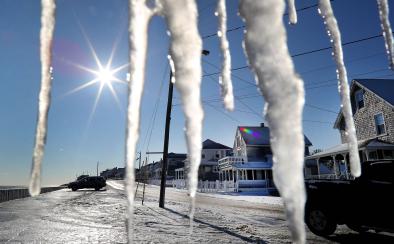Science Source
Changes in U.S. East Coast Cyclone Dynamics with Climate Change
- Previous studies investigating the impacts of climate change on extratropical cyclones have primarily focused on changes in the frequency, intensity, and distribution of these events. Fewer studies have directly
- Investigates changes in the storm-scale dynamics of individual cyclones. Precipitation associated with these events is projected to increase with warming owing to increased atmospheric water vapor content.
- Tests the hypothesis that cyclone intensity would be enhanced through increased lower-tropospheric diabatic potential vorticity generation
- Finds that precipitation increases at a rate slightly less than that dictated by the Clausius–Clapeyron relation with warming
- Finds increases in cyclone intensity are seen in the form of minimum sea level pressure decreases and a strengthened 10-m wind field
- Finds that amplification of the low-level jet occurs because of the enhancement of latent heating
- Storm-relative potential vorticity diagnostics indicate a strengthening of diabatic potential vorticity near the cyclone center, thus supporting the hypothesis that enhanced latent heat release is responsible for this regional increase in future cyclone intensity
Related Content
Science Source
| Science Advances
A stratospheric pathway linking a colder Siberia to Barents-Kara Sea sea ice loss
Pengfei Zhang, Yutian Wu, Isla R. Simpson et al
Science Source
| Geophysical Research Letters
Observations reveal external driver for Arctic sea‐ice retreat
Dirk Notz, Jochem Marotzke
Science Source
| Nature Communications
Warm Arctic episodes linked with increased frequency of extreme winter weather in the United States
Judah Cohen, Karl Pfeiffer, Jennifer A. Francis
Headline

Jan 17, 2018 | Weather Underground | Category 6
Extreme Temperature Workout: The Gyrations of January 2018


